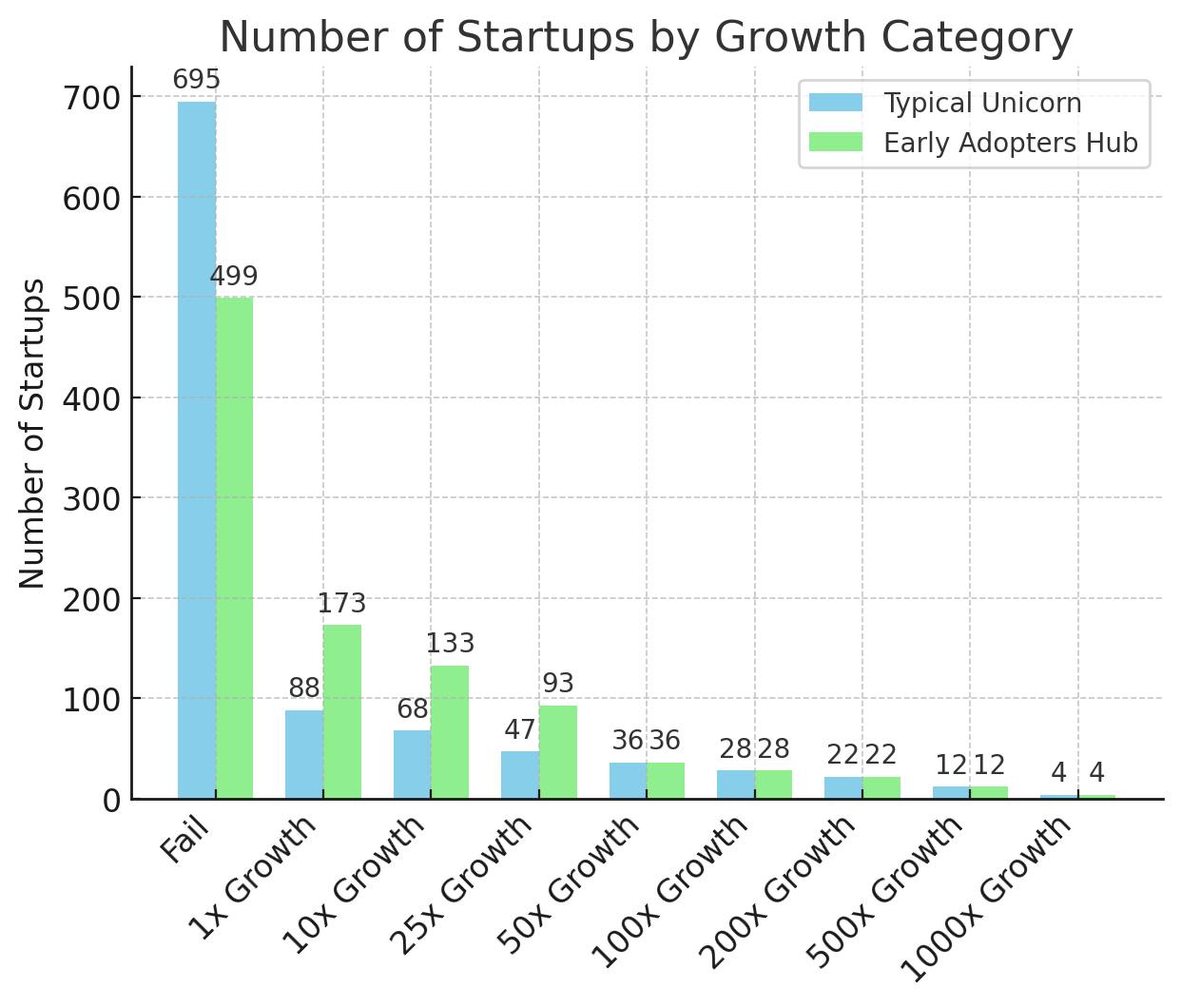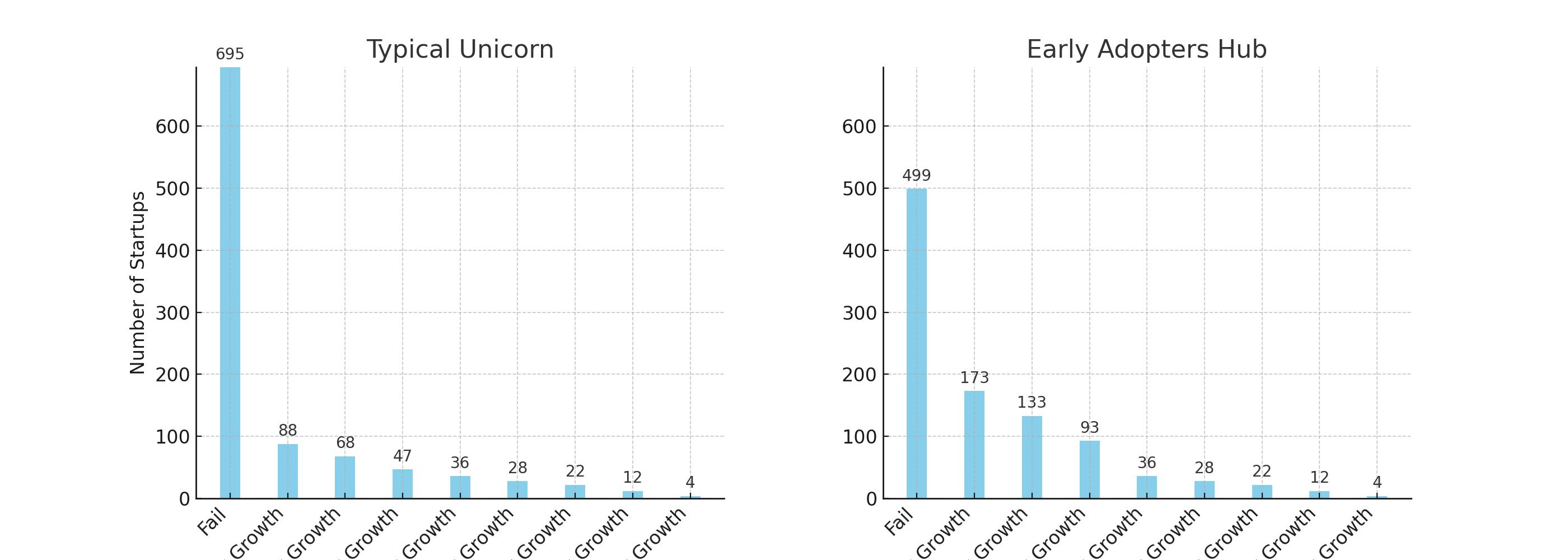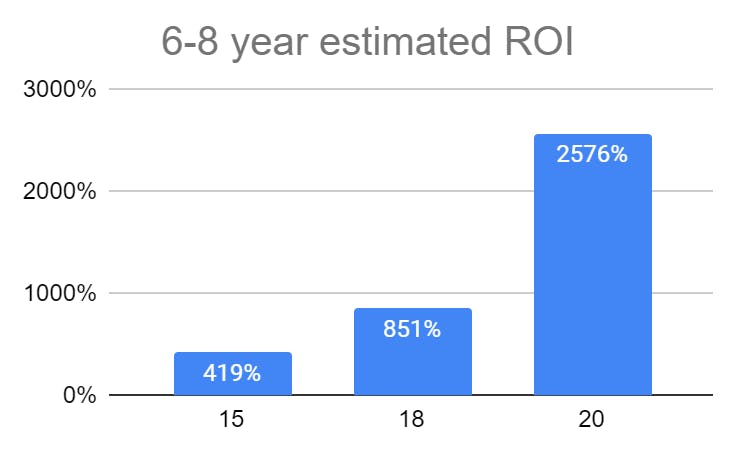Share
Explore
Early Adopters Hub - Investment
Mission driven, quality deal flow, at a great stage and price
Summary and Investment Thesis
Our thesis
Power law plus - It's the backup, not the strategy
Unicorns just happen - You can't predict or nurture
Reduce Failure Rate - Maximising returns by minimising 0s
Graphs v1 - stats together on single graph


Graphs V2 - stats on separate graphs


Get in early - Price matters and significantly mitigates risk
Don't invest in ideas - Only validated ideas can be part of the portfolio
Unprecedented capital efficiency - Better valuations, less dilution, lower need for continuous raises
Niche focus - Compounding knowledge, network, and partnerships benefits
Objectives and future vision
Goal of investment and opportunity
Investment terms
Why an SPV?
Summary of investment mandate
Methodology - How do we achieve our goals?
Background - how we established our methodology and solution
Reach/attraction - where do we find startups to work with?
The engagement process - from introduction to presentation
Vetting/screening - converting that information into a filter
On-going collaboration - how we maximise the chance of success
Facilitating engagement with prospective customers - the accountants
Methodologies
Additional critical success factors
Bringing it all together
Risk and reward analysis
Reward - upside return potential

Risk - downside potential and mitigations
Risk
Mitigation
Risk
Mitigation
1
Unable to attract enough deal flow
Our track record demonstrates more than enough deal flow from previous years
2
Fewer startups exit than predicted
Our comprehensive offering of network, vetting, ongoing support and more should enable us to minimise this occurring
3
Exit value is smaller than anticipated on exit events
A healthy/significant enough deal flow should compensate/overcome any shortfall
4
Luck
By ensuring significant deal flow, the power law should minimise the effects of bad luck
5
The largest area of risk - as it’s unknown, it’s impossible to mitigate - if it weren’t unknown, it wouldn’t be a risk. Adaptability, resilience, attention to detail and the power law are our best defense
There are no rows in this table
Case studies and existing portfolio
Legal aspects
Objectives
Suggested structure - hypothesis 1
Suggested structure - hypothesis 2
Return on investment - how returns will be distributed
Protection
Additional notes for call with lawyer
Conclusion and next steps
Appendix
Want to print your doc?
This is not the way.
This is not the way.

Try clicking the ⋯ next to your doc name or using a keyboard shortcut (
CtrlP
) instead.